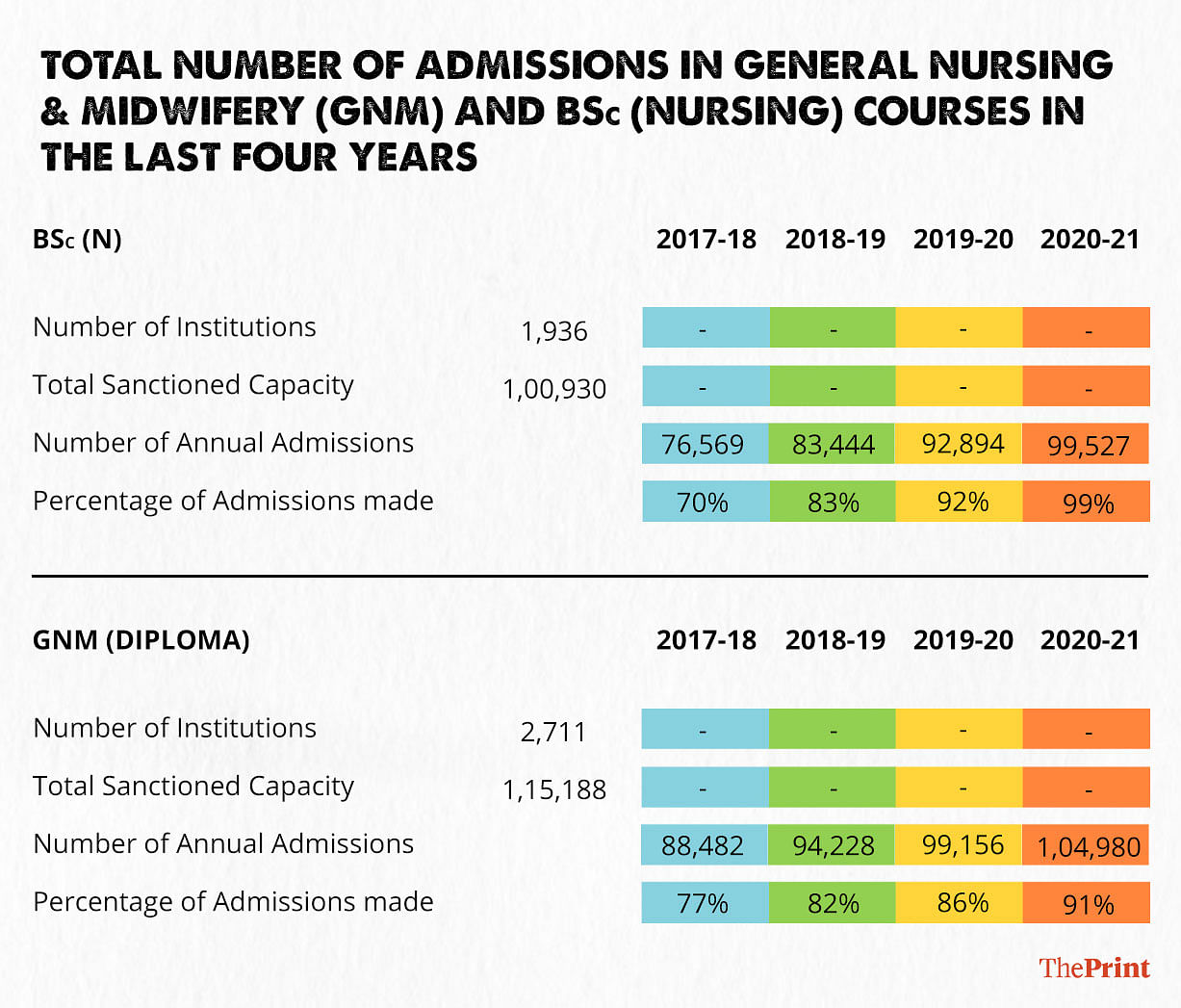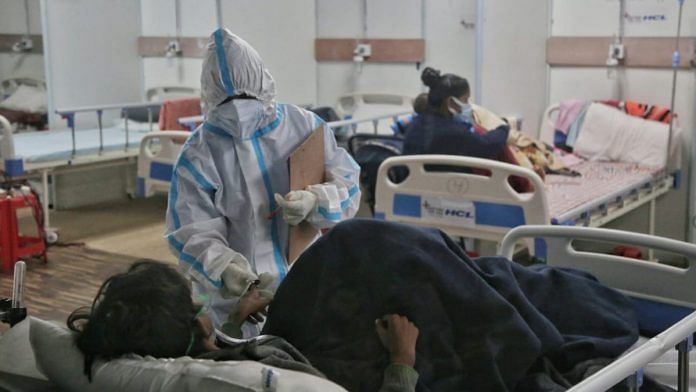New Delhi: Nurses have been among the worst hit by the Covid-19 pandemic due to their frontline role as healthcare providers, but that has not deterred young people from opting for nursing courses.
Data available with the Indian Nursing Council (INC) show that between 2017-18 and 2020-21, occupancy of BSc (nursing) seats went up to 99 per cent from 70 per cent, while that for general nursing and midwifery (GNM) diploma courses went up to 91 per cent from 77 per cent.
There are 1,00,930 BSc (nursing) seats in 1,936 colleges. Occupancy rose steadily to 83 per cent in 2018-19 and 92 per cent in 2019-20 to the 2020-21 high, which was through the first wave of the Covid pandemic.
The occupancy of the 1,15,188 GNM diploma seats in 2,711 institutions touched 82 per cent in 2018-19 and 86 per cent in 2019-20.
India, however, has been facing an acute shortage of nurses, with top hospitals reporting an attrition rate of as high as 40 per cent, as better pay and working conditions make nurses choose greener pastures abroad.
There are no reliable estimates of how many nurses died during the pandemic, but in a reply during the ongoing Budget session of Parliament, the Union ministry of health said that insurance claims of 1,616 healthcare workers who died in the line of duty have been settled so far.
Also read: Govt moves to address shortage of nurses, likely to permit foreign graduates to work in India
‘Biggest exporter, but numbers below WHO norm’
Dr Judith Angelitta Noronha, Dean, Manipal College of Nursing, told ThePrint: “There has been no decline in the number of applications through the pandemic. In fact, numbers have been going up because there is a lot of demand abroad for Indian nurses. We got about 900 applications for the 100 seats we have.”
“About 95 per cent of our graduates are placed abroad. They just need to clear the country-specific examinations. However, the number of PG (postgraduate) applicants has gone down a little because many people have not been able to complete the work experience requirement. We have about 40 applications for 25 seats,” Noronha added.

Dr Roy K. George, national president of the Trained Nurses Association of India (TNAI), estimates that the number of applications that reputed colleges receive for nursing seats is usually in the 10:1 ratio, but working conditions and salaries in the private sector are poor, while the number of jobs in the government sector are limited.
“India has emerged as the biggest exporter of nurses, but our own availability at 1.7 nurses per 1,000 people is far below the World Health Organization (WHO) norm of four,” George said.
‘Backbone of patient care’
According to a senior nursing executive in a reputed private hospital chain, the annual attrition rate among nurses in the hospital is about 40 per cent.
Many young men and women join nursing colleges with the aspiration of working abroad and just join hospitals in India to gather the requisite experience, the executive said.
Industry estimates suggest India is 3.5 million nurses short of the required number.
Said Capt (Dr) Usha Banerjee, group director (nursing), Indraprastha Apollo Hospital, “Nursing shortage has gone to crisis proportions across the world. The global shortage is among the many reasons that have skewed demand and supply.”
“Unfortunately we in India do not train and produce as many nurses as the bed and infrastructure upgrades require. There is no proportionate alignment. The country has probably not invested enough to retain nurses in this country. One needs to understand that they are the backbone in a hospital of patient care,” Banerjee added.
There are multiple issues that nurses face, among them the lack of pay parity in government and private hospitals, said Dr T. Dileep Kumar, president, INC.
No reliable records of working nurses
There is also the problem of India not having reliable records of the total number of nurses currently working in the country. Nurses register with the state nursing councils, but do not have to inform them when they travel abroad.
“We know that, since 1947, there have been 23 lakh registered nurses in the country. But how many of them are still working in the country, we do not know. People would have died, they would have left the country but we do not have those records,” Kumar told ThePrint.
That is why, he added, the INC has been pushing for a nationwide Nursing Registration Tracking System (NRTS).
“We currently have updated data for about a million nurses, which we estimate is about 65 per cent of the total workforce in the country. We are yet to get data from some states such as Karnataka and Tamil Nadu. Once the NRTS is completed, we will be in a better position to understand where we stand,” he said.
(Edited by Saikat Niyogi)
Also read: Indian healthcare is missing out on talents not inclined to join medical profession



